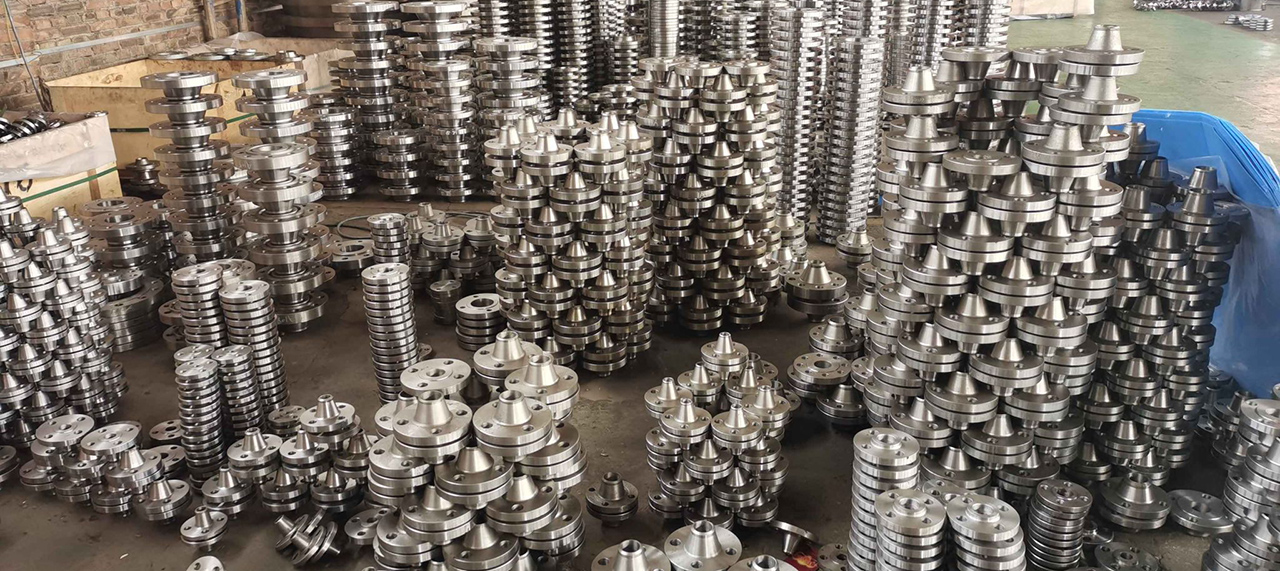Share this
Pipe flange connection
Pipe flange connection refers to the way that pipes are connected to each other with flanges. Pipe flange connection is a commonly used method in pipe connection now. Because flange connection is convenient and easy to disassemble and inspect, it is very popular among customers, so flange connection Connection is an important connection method in pipeline construction.
Pipe flange connection
What is a pipe flange connection?
Pipe flange refers to the flange used for piping in pipeline installations. A pipe flange connection refers to a detachable connection in which flanges, gaskets and bolts are connected to each other as a set of combined sealing structures. Flanges are generally used in pairs, with a sealing gasket between the two flanges, holes on the flanges, and bolts to tightly connect the two flanges.
Pipe flange connection method
There are three ways of flange connection: welding, loose sleeve and thread. Among them, welding flange is divided into three types: flat welding, butt welding and socket welding.
Flat welding: It is generally used in medium and low-pressure pipelines with nominal pressures below 0.25MPa. Therefore, only the outer layer is welded, and the inner layer does not need to be welded.
Butt welding: Generally used in medium and high-pressure pipelines with nominal pressures between 0.25 and 2.5MPa. The inner and outer layers of butt welding flanges must be welded.
Socket welding: generally used in pipes with a nominal diameter less than or equal to 40mm and a nominal pressure less than or equal to 10.0MPa.
Loose sleeve: Generally used in pipelines where the pressure is not high but the medium is relatively corrosive, so this type of flange has strong corrosion resistance and is mostly made of stainless steel.
Thread: The inner hole of the threaded flange is threaded. It can be connected with threaded pipes without welding. Therefore, it is easy to install and maintain and can be used in some places where welding is not allowed.
If you want to know more detailed classification of pipe flange connections, please see the article Classification of Pipe Flanges.
Pipe flange connection
Pipe flange connection process flow
1. Inspection before installation
Before installation, check flanges, bolts, and washers to meet requirements. The sealing surface must be smooth and clean without burrs. Bolts and screws must be complete with no gaps. The fabric of the gasket must be soft and not easy to age. No cracks are allowed on the surface of all components. Before assembling the flange, the relevant components need to be cleaned and free from oil stains.
2. Connect flange and pipe
The midpoint between the pipeline and the flange should be on the same horizontal line, and a verticality of 90 degrees should be ensured where the midpoint of the pipeline is connected. The flange bolt positions on the pipeline should be consistent. Start welding the flange and pipe.
3. Add gasket seal
Check again that the sealing surface should be smooth and clean without burrs. Put in the gasket and the sealing plate should be centered to prevent the gasket from being squeezed.
4. Bolt tightening
The last step is to use bolts to tighten the flange. In this step, pay attention to check again whether the bolts are intact and cannot be damaged.
Pipe flange connection
Precautions for pipe flange connection
1. There are many different connection methods for pipe flanges, but their connection process has not changed much. But no matter which connection method is used, there are the same technical standards.
2. Flange gaskets are in a pipeline. Under the same pressure, the gaskets selected between flanges need to remain the same, so that they are easier to replace during later maintenance. The selection principle of the gasket should be as close as possible to the selection of small amplitude. to ensure it is not crushed. At the same time, the texture of the gasket should be flexible, and not easy to age, and the surface should be free of damage, wrinkles and scratches.
3. The flange installed on the branch pipe should be more than 100MM away from the outer wall of the riser and more than 200MM away from the building.
4. Anti-corrosion treatment, because the flange is easily corroded if it is directly buried underground. Therefore, when the flange is buried underground, anti-corrosion treatment is required.
Advantages of pipe flange connections
1. The main advantages of flange connection are low cost and easy maintenance. Because the flange is easy to install and disassemble, it is especially practical for some pipes that require regular internal inspection. When any component needs to be disassembled for maintenance, inspection, replacement or operation, the flange connection method is extremely convenient, so the pipe flange joint is the first choice for pipe connection in pipeline construction.
2. The pipe flange connection has good sealing performance and is not easy to leak. Different flanges can easily cope with various places.

